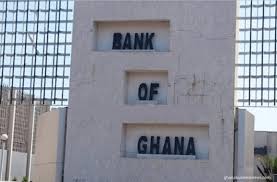
Audio By Carbonatix
Profit in the banking industry declined by 18.9% in 2022, driven by the mark-to-market losses on investments, higher impairments on loans, and rising operating costs.
This is compared to 12.3% annual growth recorded in 2021
According to the Bank of Ghana, the banks profit-after-tax was ¢3.9 billion at the end of December 2022.
But Net interest income grew by 23.0% to ¢15.8 billion, higher than the growth of 14.5% in 2021. Net fees and commissions also went up by 27.4% to ¢3.7 billion, from the growth of 24.8% recorded in 2021.
Accordingly, operating income increased by 30.9%, compared with 14.6% recorded a year earlier.
The Central Bank said the strong outturn in operating income was however moderated by increased operating expenses and provisioning during the year.
Operating expenses rose by 32.2% in December 2022, compared with 14.2% growth in 2021. Provisions also increased sharply by 184.0% in December 2022 relative to a contraction of 4.7% a year earlier, due to the strong uptick in credit growth, elevated credit risks, and impairments on investments.
New loans in 2022 increased by 47.5%
Meanwhile, new loans and advances in 2022 increased to ¢53.7 billion, reflecting an annual growth of 47.5%.
This is compared with the growth of 6.8% in 2021.
Similarly, private sector credit growth picked up, partly reflecting continued portfolio rebalancing by banks and revaluation effects on foreign currency denominated credit.
In nominal terms, private sector credit increased by 31.8% in December 2022, compared with 11.2% in December 2021.
In real terms, however, private sector credit contracted sharply by 14.5%, compared with 1.3% contraction over the review period, reflecting sustained price pressures.
Financial soundness indicators mixed
Also, trends in Financial Soundness Indicators were mixed, reflecting heightened risks faced by the industry.
The industry’s Capital Adequacy Ratio (CAR) declined to 16.6%, but remained above the prudential minimum of 13%, as at December 2022, from 19.6% in December 2021.
This is attributed to losses on mark-to-market investments, increase in risk-weighted assets of banks from the high growth in actual credit, and the price effect of the depreciation of the Ghana Cedi on foreign currency denominated loans.
The sector’s profitability indicators, namely, the return-on-equity and the return-on-assets also declined during the period, in line with declining profit
Latest Stories
-
President’s New Year message lacked hope and sincerity – NPP’s Senyo Amekplenu
25 minutes -
Ebo Noah remanded pending psychiatric exam, to reappear on January 15
46 minutes -
Our public university system is falling down
49 minutes -
Ho Central Mosque under heavy security, worshippers forced to pray outdoors
1 hour -
An open letter to H.E. John Dramani Mahama: The audacity of the third shift
2 hours -
A new era of healthcare dawns in Kintampo: Mary Queen of Love Medical Hospital opens its doors
2 hours -
NDC gov’t has demonstrated strong fiscal discipline – Abdulai Alhassan
3 hours -
Heavily armed Burkinabè soldiers arrested in Ghana
3 hours -
Tamale Chief commends IGP Special Operations Team for crime reduction efforts
3 hours -
None of NPP’s 5 flagbearer aspirants is credible – Abdulai Alhassan
4 hours -
Police arrest suspect for unlawful possession and attempted sale of firearm
5 hours -
3 arrested in connection with Tema robberies
5 hours -
Your mouth on weed is nothing to smile about
5 hours -
25% university fees hike, what was the plan all along? — Kristy Sakyi queries
7 hours -
Some OMCs reduce fuel prices; petrol going for GH¢10.86, diesel GH¢11.96
7 hours

